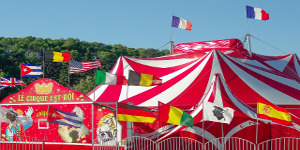English Year Five Planning Term Three
Discover some schemes of work, lesson plans, classroom worksheets and interactive activities to develop skills in English for Year Five in Key Stage Two covering a range of fiction, non-fiction and poetry topics and themes
Theme One
Environment
Investigate the structure and content of a narrative story by a significant children’s author, write reports about environmental issues, select figurative language to describe seasons of the year in poetry, explore spellings of words with different suffixes and practise using modal verbs and commas in sentences.

(A) Running Wild
Investigate the main characters and settings in a story by a significant author set in a rainforest, explore spellings of words with tious and cious endings and write and change sentences using relative clauses

(B) Story Chapter
Plan and write an extra chapter for an adventure story by a significant author, practise spelling words with tious and cious endings and extend sentences using relative clauses

(C) Viewpoints
investigate opposing viewpoints as presented in the media about environmental issues, explore spellings of words with cial endings and practise punctuating sentences using commas

(D) Wind Turbine
Plan and write a magazine article about an environmental issue, learn rules to spell words with cial and tial endings and use commas to separate phrases and clauses in a sentence

(E) Seasons
Select figurative imagery to describe different seasons of the year for use in poetry with similes and metaphors, investigate spellings of words with different suffix endings and use modal verbs to compose lines of poetry
Theme Two
Circus
Explore how to work with persuasive language to compose adverts for a circus and debate whether animals should perform in circus and structure and perform play scripts and poems about life in a circus

(F) Circus Adverts
Evaluate and create adverts that can be used to persuade people to visit a circus, practise adding the suffix able to word roots and use modal verbs to compose persuasive language for use in commercials

(G) Circus Animals
Prepare and hold a class debate on the subject of banning animals used in a circus performance, work with spelling rules to add the suffix ible to word roots and practise writing persuasive sentences using modal verbs

(H) Circus Report
Plan and write a written report using persuasive language about some of the animals that performed in a circus in the past, identify spelling rules to add suffixes to word roots and investigate words that can be used connect paragraphs in writing

(I) Circus Plays
Explain and model some of the special ways of telling stories using miming actions and character dialogue, investigate the spellings of words that are commonly confused and practise punctuating sentences using semi-colons and dialogue

(J) Circus Stories
Write and perform a play script linked to different film scenes about what might happen in a circus, explain the meaning of commonly confused words and link clauses in sentences using conjunctions and semi-colons

(K) Circus Life
Select and use figurative language to write poems about what might happen in a circus, learn the spellings and meanings of words that are commonly confused and write similes and metaphors using expanded noun phrases

Lesson Presentations
Interactive digital presentations to support the teaching of different topics and themes

Class Games
Find out what teachers are saying about the primary resources they have used to support their teaching

Teaching Ideas
Ideas and advice for classroom lessons and teaching activities to support busy primary school teachers

Teaching Tools
Discover time saving tools to create custom made lesson plans, templates and worksheets to support classroom teaching

Keep Updated
Subscribe to the newsletter to keep updated on the latest teaching packs and get some free ideas for your lessons
